Disclosure: Please note that some links are affiliate links, and at no additional cost to you, we earn a commission if you make a purchase.
If you would like to support this website in some way, using these links will help do exactly that.
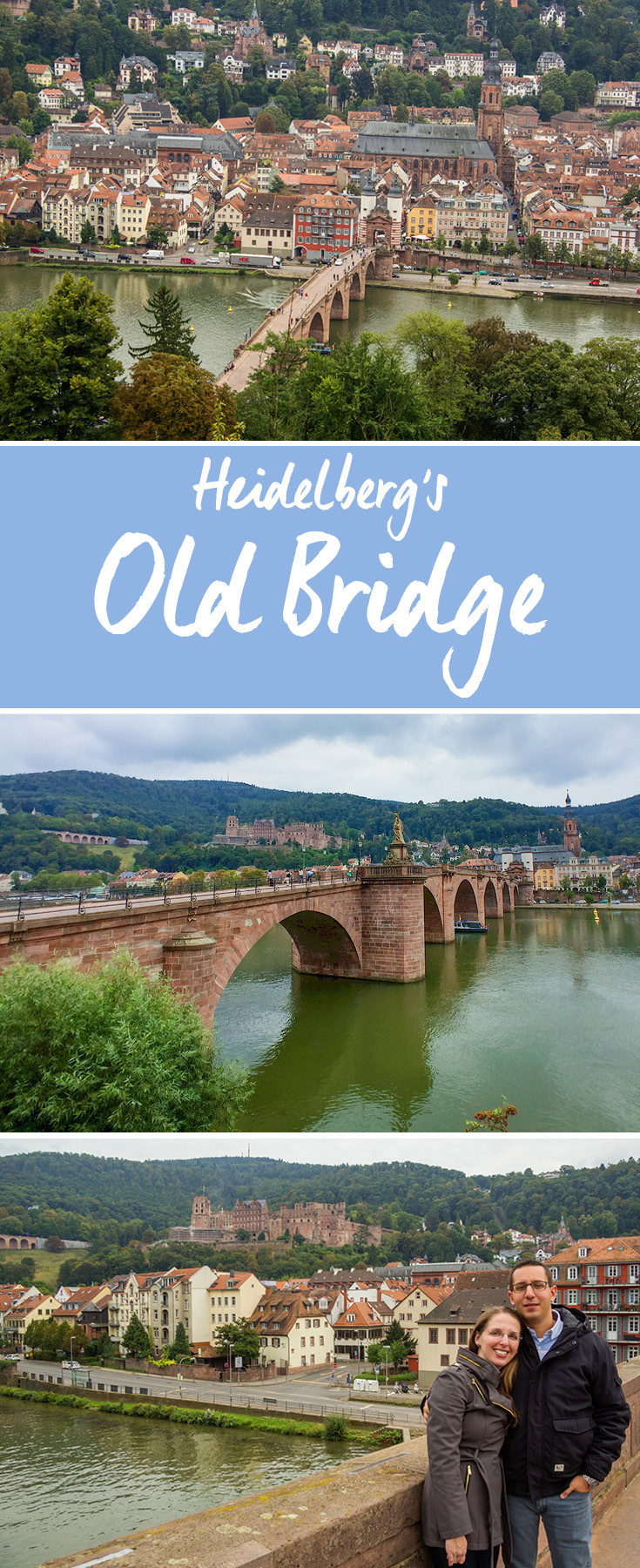
The Old Bridge, officially called Karl-Theodor Bridge, was built from 1786 to 1788 under Prince Karl Theodor, after eight wooden predecessors were destroyed by flooding and wars. It provides a great 360 degree spot for pictures of Heidelberg’s skyline complete with church spires, the castle, and riverfront homes.

Under Attack and Sabotage
If you look in the history books of Heidelberg, the Old Bridge is often mentioned as a place of warfare. The towers served as prisons and as the bridge guards’ domicile in earlier centuries. During the Coalition Wars (1792-1815) the French troops occupied half of the Palatinate up to the river Rhine, and attempted to conquer the Old Bridge, but did not succeed. The bridge you see today was rebuilt after WWII in 1947, when it was partly destroyed for the sake of a strategy. The German military blew up the fifth and sixth bridge pillars to prevent the entry of the American troops into Heidelberg. This approach to “secure” Heidelberg proved useless, the Allied Forces still made it over the bridge. From the 1970’s on, the bridge was modernized and adapted to serve a more modern infrastructure. Today the bridge can be driven on by vehicles between 6am to 10pm, so watch out for cars when you take selfies or watch boats float by. After 10pm, it serves as a pedestrian zone only until the next morning.
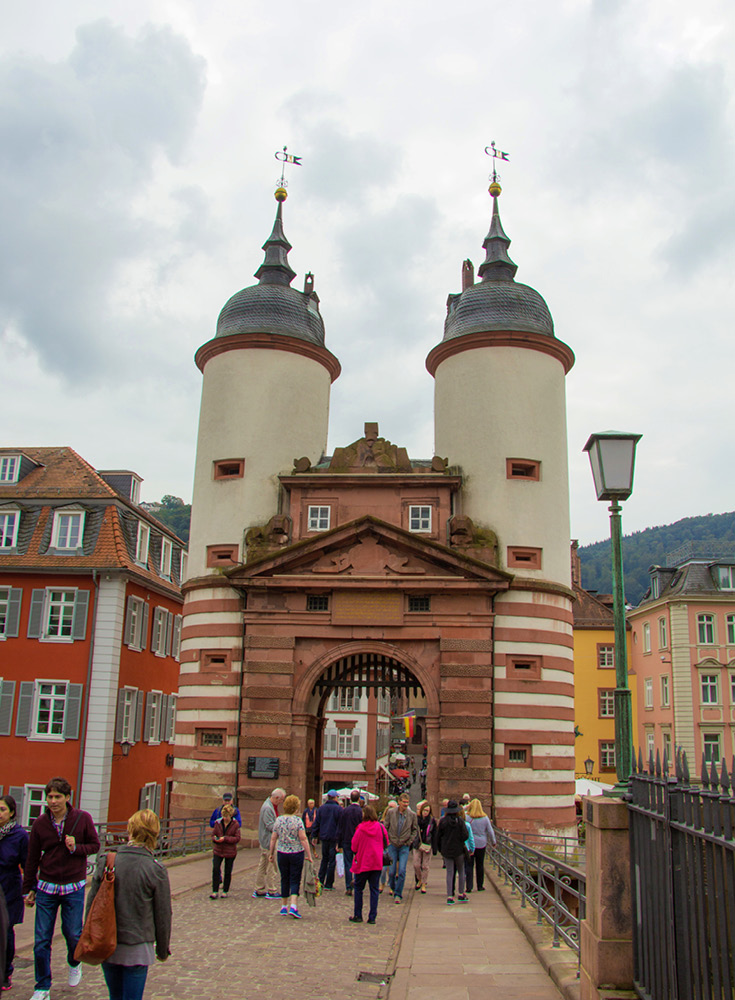
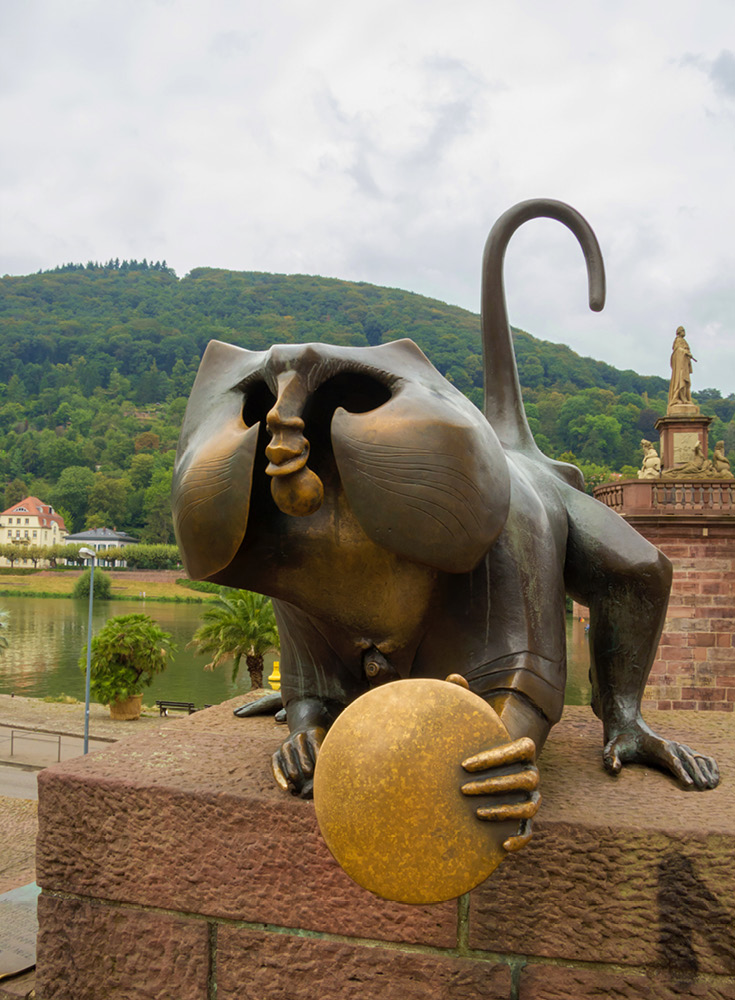
Can’t Miss the Philosophical Monkey
One piece not to miss within all the beautiful surroundings is the bronze monkey. A monkey figure as a city monument has already been mentioned in a poem by German author Martin Zeiller in 1632, which is still written next to the new sculpture (see below for the text). The old monkey figure of the 17th century was destroyed in 1689 and a new monkey was not created until 1979, when artist Prof. Gernot Rumpf re-created it. The new bridge monkey, like the original, holds a mirror in his hand. Everyone that looks or takes a picture of the monkey will see their own face in the mirror. Next to the monkey is a bronze plaque with the following inscription:
WAS THUSTU
MICH HIE ANGAFFEN
HASTU NICHT GESEHEN
DEN ALTEN AFFEN
ZU HEYDELBERG
SICH DICH HIN UNND HER
DA FINDESTU WOL
MEINES GLEICHEN MEHR
This translates to: Look around you or in the mirror, and you will see more specimens of this species. Basically the monkey is telling us not to take ourselves so seriously.
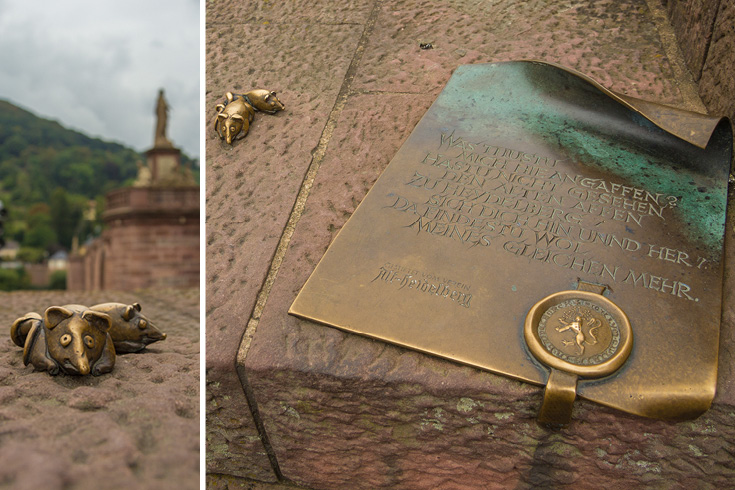
By the way: Beside the plaque you can see 2 mice, which is the creative “signature” of Prof. Gernot Rumpf, who has created the monkey sculpture and many more sculptures and fountains all over Germany. You can see more of his work here.
Follow Along
If you enjoyed this article, or these topics sound interesting to you, you'll love our weekly newsletter. You'll receive the newest posts each week and exclusive access to free planning resources like ‘Packing List & Tips for 2 Weeks in Germany’ and ‘Everything You Need to Rent a Car in Germany’.
Thank you for reading!

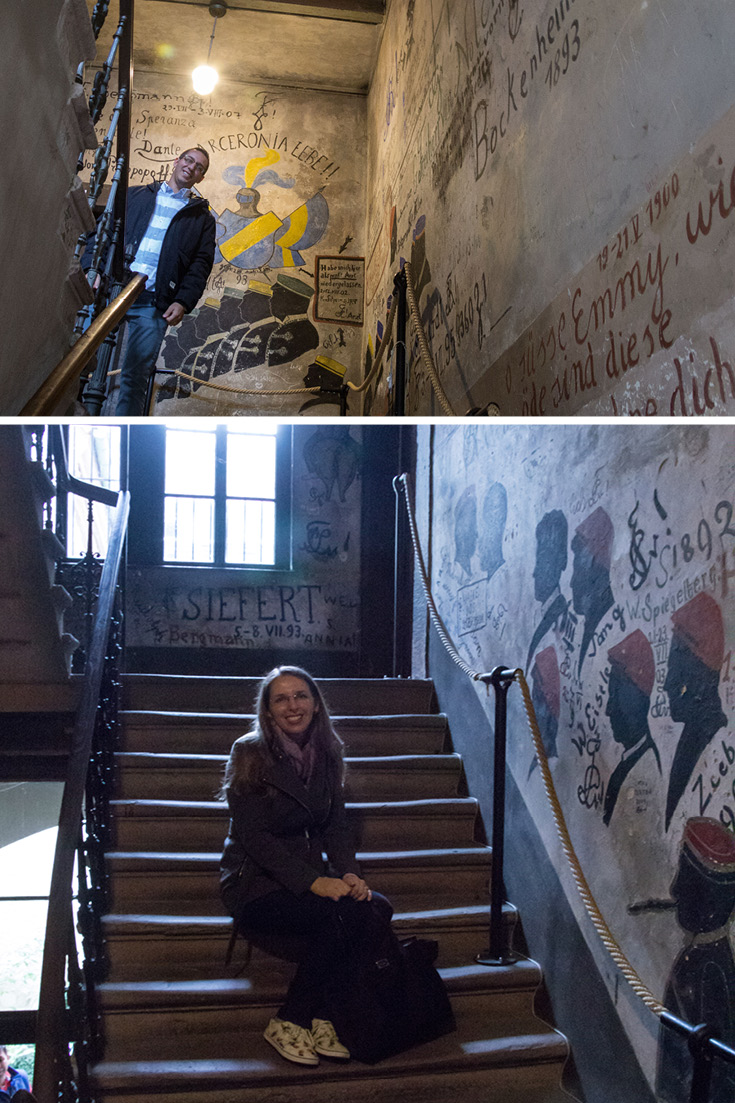
Studentenkarzer, Student Prison
On the back of Heidelberg’s Old University building lies the Studentenkarzer, which was a student prison. From 1778 to 1914, students were jailed in this building, being punished for trivial offenses such as nightly disturbances or public intoxication. At that time, the university still had its own jurisdiction so that an official could impose punitive punishment. The arrest lasted anywhere between three days to four weeks, depending on the offense.
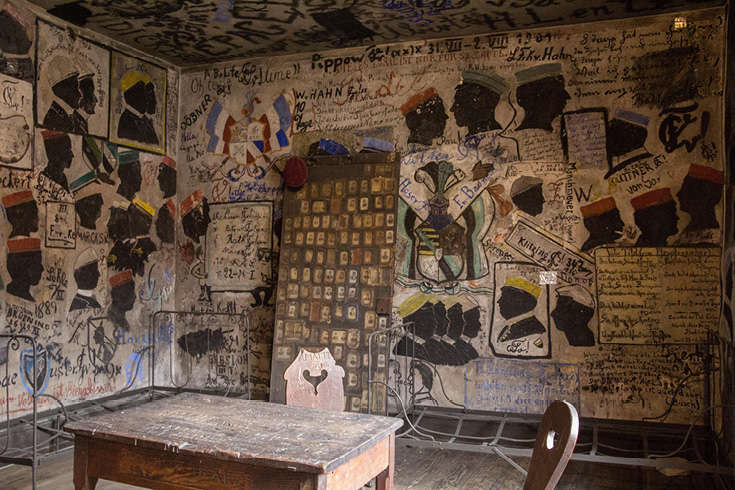
As you head up the worn and uneven stairs, you will see graffiti and art everywhere: on walls, above the doors, and even on the ceiling. Upstairs are five prison cells, big enough for two or three students to share a cell. During the first two days of confinement, students were only provided with bread and water. Starting day three, visitors could bring them food and even beer. Students were not allowed to leave the building during their sentence, but they were permitted to attend lectures for the university through a connecting door from the prison. In the end, the time spent in the Karzer was a lot more comforting than it sounds, since the cells were spacious, and had desks and regular beds in them.
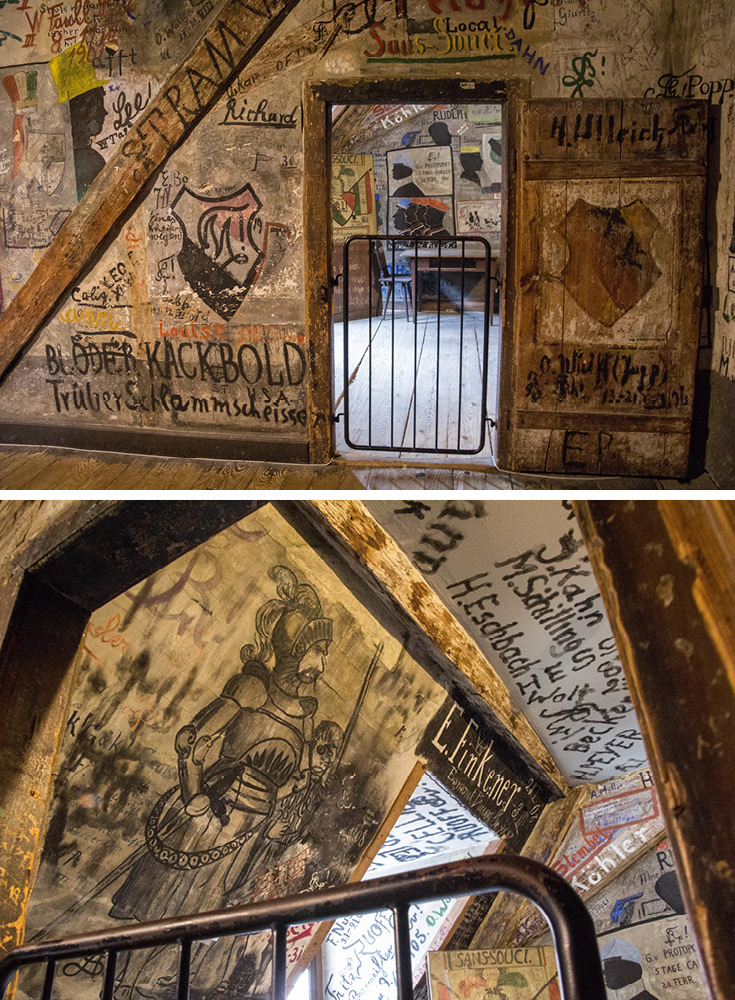
Many students spent their time immortalizing themselves on the walls with their faces, visions and the signs of their respective student connections. These original fixtures and graffiti can still be seen today. Even Mark Twain visited the Studentenkarzer and mentions it in his book, A Tramp Abroad; “The walls were thickly covered with pictures and portraits (in profile), some done with ink, some with soot, some with a pencil, and some with red, blue, and green chalks; and whenever an inch or two of space had remained between the pictures, the captives had written plaintive verses, or names and dates. I do not think I was ever in a more elaborately frescoed apartment.”
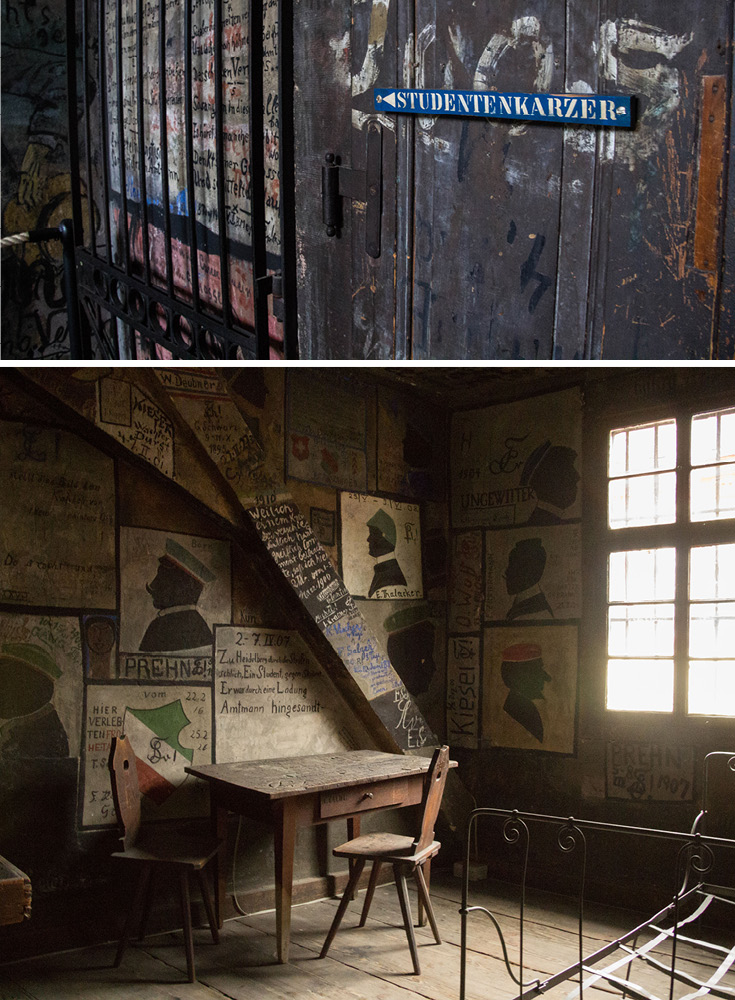
If you visit the student prison, buy a combined ticket, which will not only include admission to the student prison, but also to the University Museum and the Alte Aula, Old Auditorium. The museum will be of limited interest if you can't read German, but be sure not to miss the Alte Aula inside the museum. It is on the back side of the Studentenkarzer. Step out onto the cobblestone street and walk around the building to enter the museum.
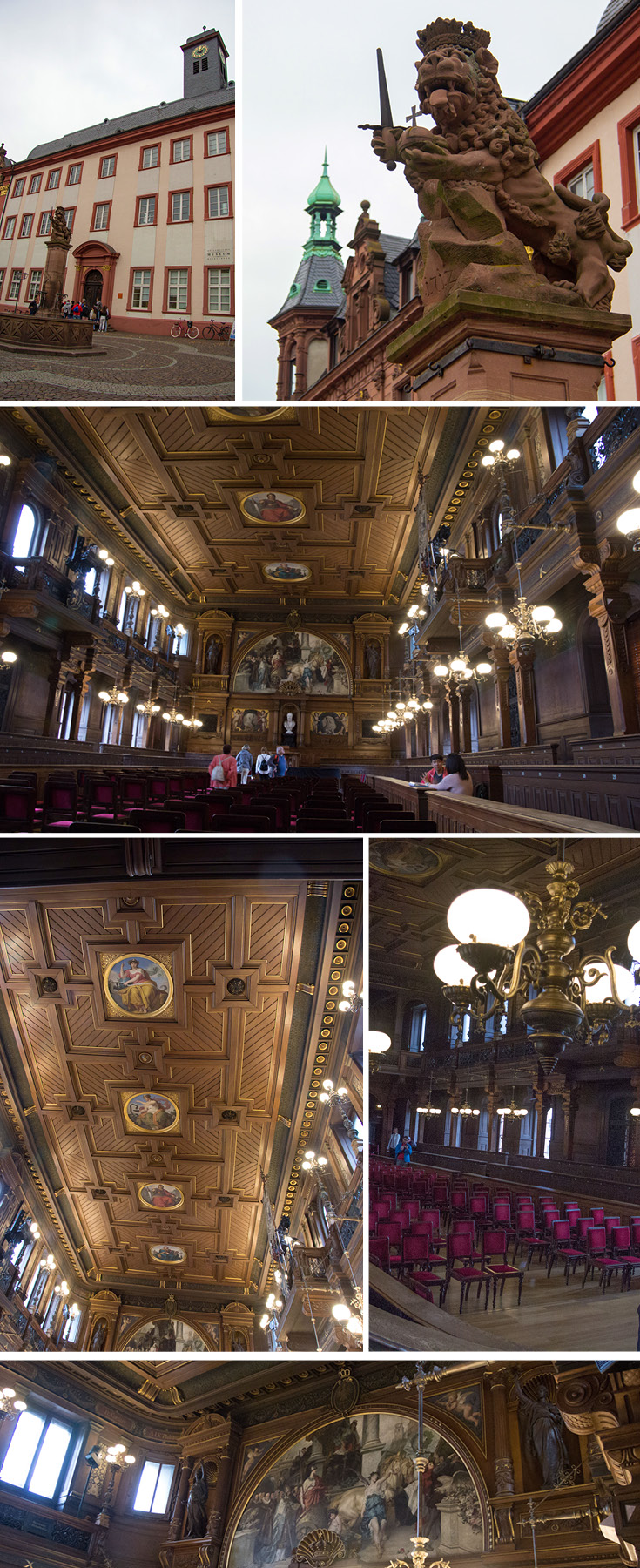
Alte Aula, Old Auditorium
After entering the museum, take the staircase one floor up and turn left into the hallway. On the right side of the hallway you can enter the Alte Aula. The interior of the auditorium - as it is still visible today - was designed for the 500th anniversary of the university in the year 1886. The architect Josef Durm created the neo-Renaissance style room, that was originally built in a baroque style. Today, this magnificent room is mainly used for academic ceremonies such as the opening lectures of newly appointed professors or graduate celebrations. The Alte Aula is also a venue for public concerts and lectures to give the venerable ambience of this auditorium a special glow.
Follow Along
If you enjoyed this article, or these topics sound interesting to you, you'll love our weekly newsletter. You'll receive the newest posts each week and exclusive access to free planning resources like ‘Packing List & Tips for 2 Weeks in Germany’ and ‘Everything You Need to Rent a Car in Germany’.
Thank you for reading!

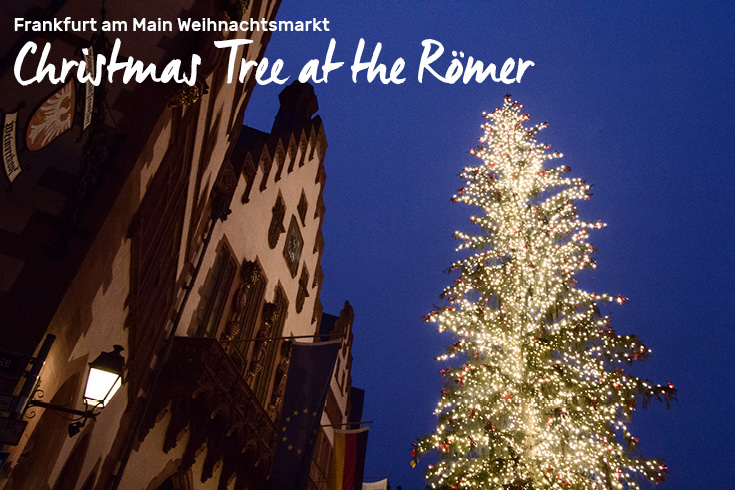
Last year was my first Christmas in Germany, and my first time visiting Christmas markets. I was emotionally surfing between being terrified of the crowds and anxious worrying whether I’d be warm enough to have a good time to bubbling to delirium level of excitement to drink authentic Glühwein and see a new facet of German culture I’d heard so much about. All of our friends and family wanted to take us to a Christmas market, so we ended up seeing four in 2017: Frankfurt am Main, Michelstadt, Nuremberg, and Hanau. I’ll share my favorite photos from each throughout this post.
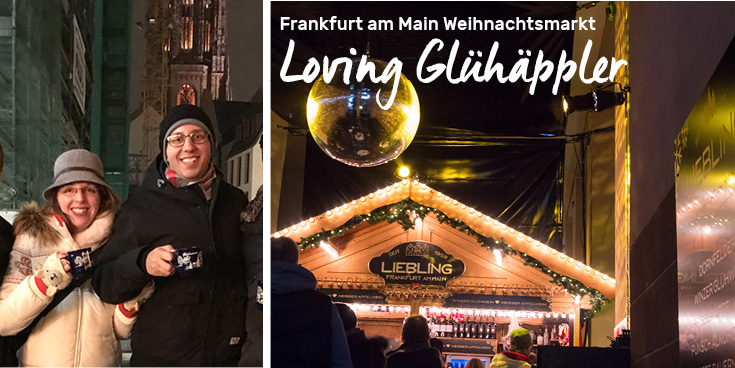
What to Wear to German Christmas Markets
As a Florida girl, I have thin blood to begin with. Anything 60 degrees Fahrenheit and below and I start layering. This is exactly what I ended up doing for the Christmas markets. I tried fleece lining leggings from Modcloth, and I could wear those under my straight legs jeans without anyone being the wiser. I really think they were a huge help to keeping me warm. When I put my thick boot socks on, I’d use the elastic from the sock to go over top the bottom of the leggings layer so no skin around my ankles were exposed. I always wore leather boots with two pairs of socks, a thin pair with the boot socks over those. Sebastian brought over air-activated heated insoles for his shoes. I tried them once, and I felt like they got too hot for my preference, but he loved them and used them throughout the whole Christmas vacation.
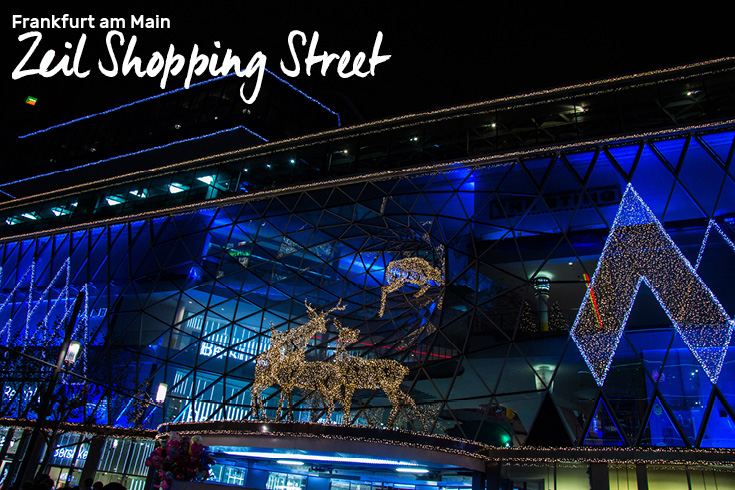
When picking out tops, remember it's unlikely anyone is going to see them! Layer up, and grab anything you have that is thermal. Even though your coat may have a hood on it, look for a winter hat that fits securely on your head. Hoods limit your peripheral vision too much to be practical. Plan on wearing gloves as well, and if you’re planning on taking pictures look for the gloves that are convertible between being fingerless and mittens. All this being said, I was NOT miserably cold. I was able to enjoy myself, and of course the hot Glühwein (pronounced glue-vine) helped!
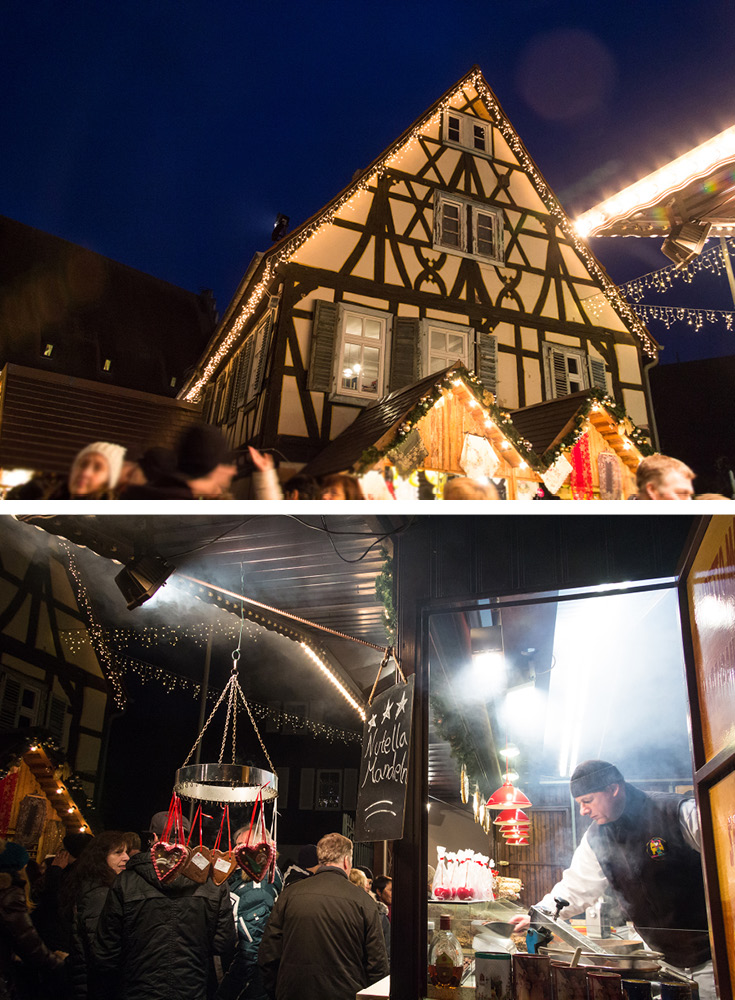
What to Drink at German Christmas Markets
Speaking of Glühwein...this hearty hot, spiced, mulled wine is the starlet beverage of the holiday season. Some Christmas markets, like Nuremberg's, the Glühwein is regulated, and all of the booths offer the same make. If you see a particular stall that has a longer line, don’t be fooled into thinking their Glühwein is better. In Nuremberg they’re all from the same manufacturer. But, other markets like Michelstadt you see the Glühwein is being freshly made in the background out of a slow cooker labeled Glühwein! It depends on the market you’re visiting. In Frankfurt am Main, they offer a hot, holiday version of their Frankfurt Äppler, called Glühäppler. Basically hot cider, which sounds odd at first, but tasted amazing.
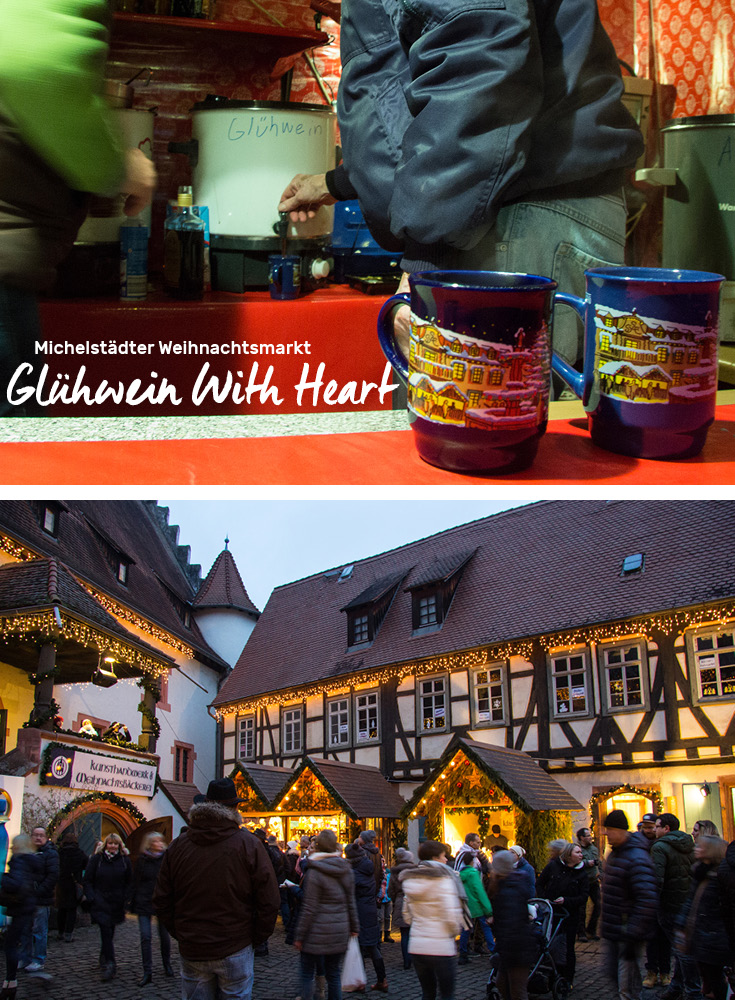
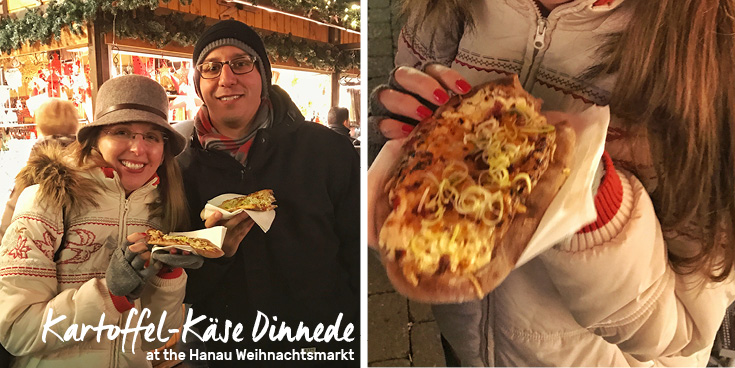
What to Eat at German Christmas Markets
Definitely go to the Christmas Markets hungry! There’s a breadth of choices. Michelstadt really pushes their boar specialities, Hanau we were encouraged to try (and we loved) the Kartoffel-Käse Dinnede. It's a type of flatbread pizza with sour cream, potatoes, and onions grilled. A safe bet is a Frikadellenbrötchen, a German meatball nestled into a sourdough bread roll. It's not messy to eat, and easy on the stomach for a night of drinking Glühwein.
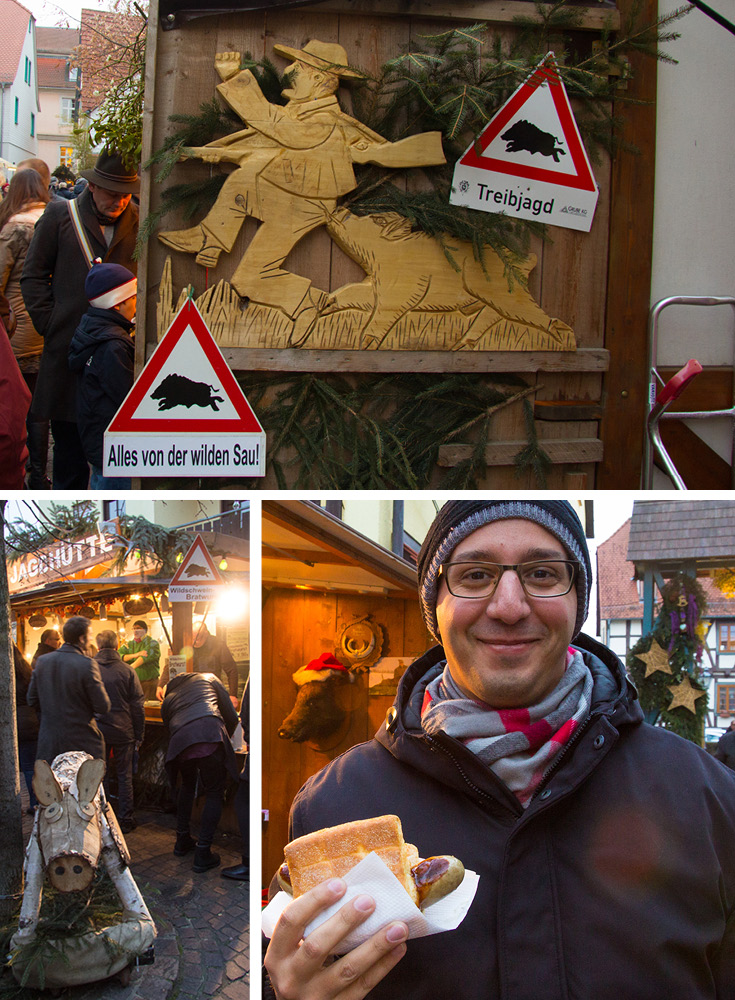
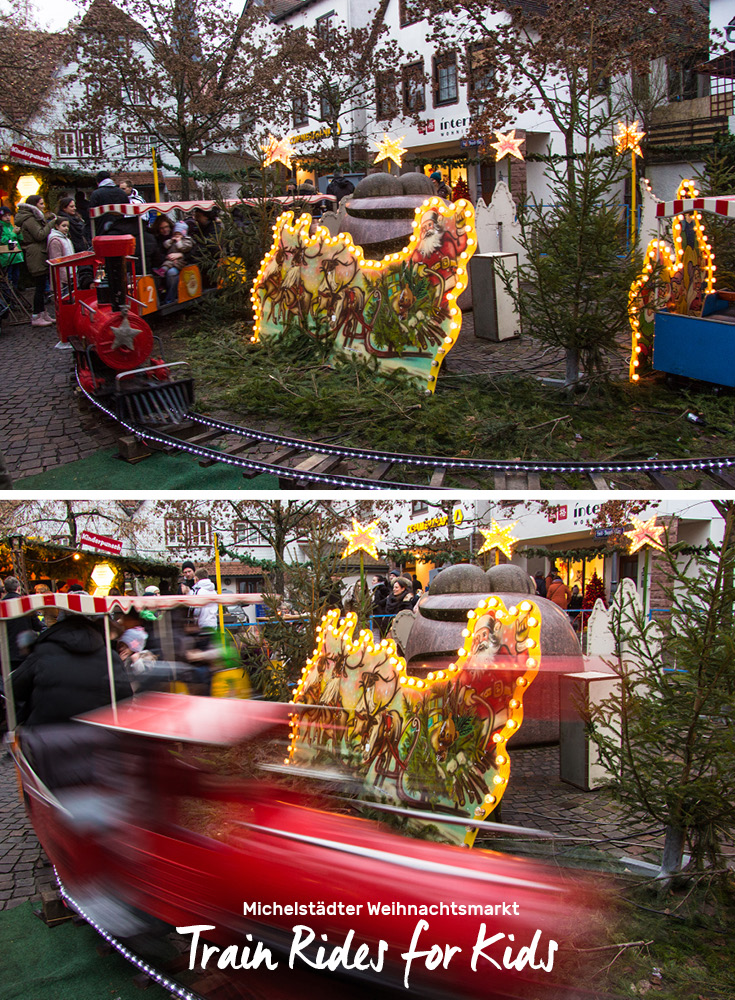
Personal Safety at Christmas Markets
When planning a fun, festive night out at the markets pick a meeting spot within the market in case someone gets separated in the waves of crowds, and pick a meeting spot outside the market in case of an emergency. Sebastian and I were at the Nuremberg Christkindlesmarkt the same night there was an attack at the Berlin Christmas Market. Overnight the security drastically changed in Nuremberg. Where there were open streets the night before, by morning large police vehicles and fire trucks were parked along any open area in order to shield the market area from attackers hoping to use vehicles for mass-harm. Don’t let fear keep you from the markets, but do be safe, smart, and plan ahead!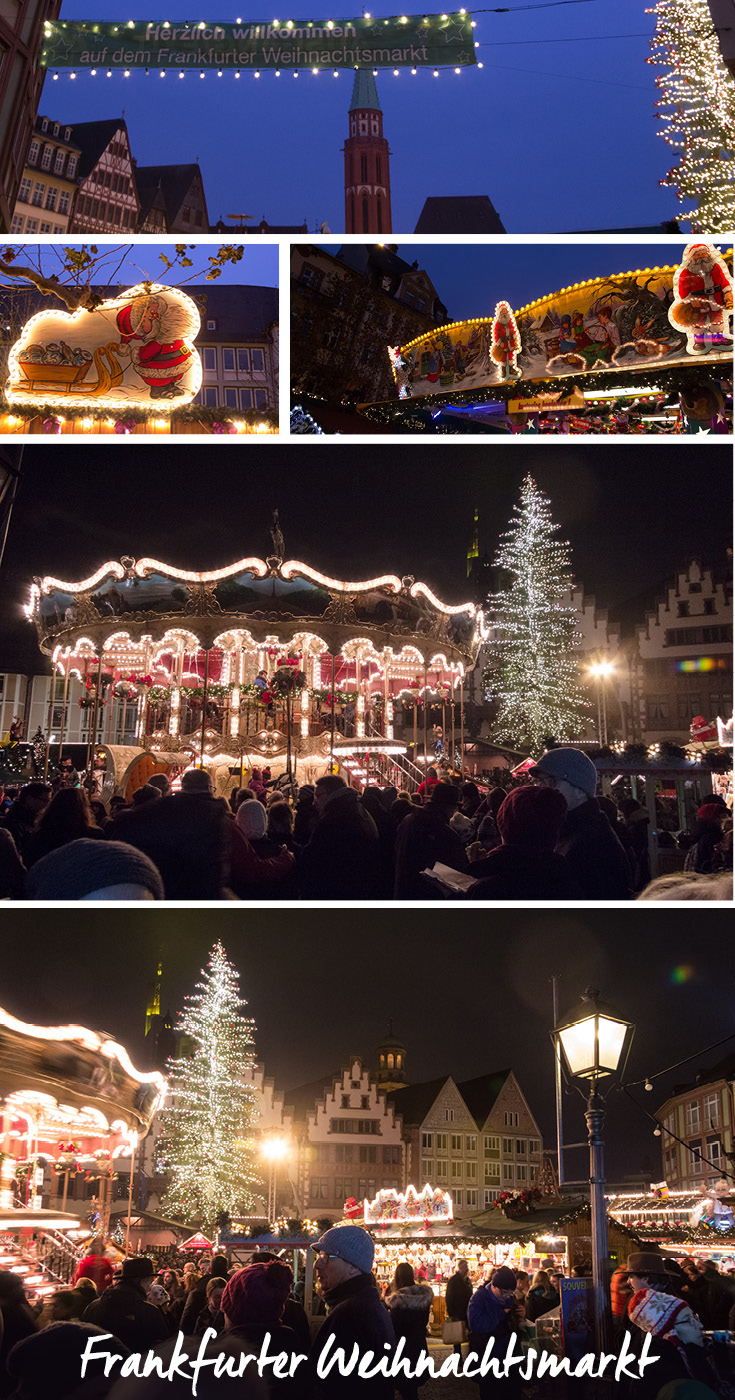
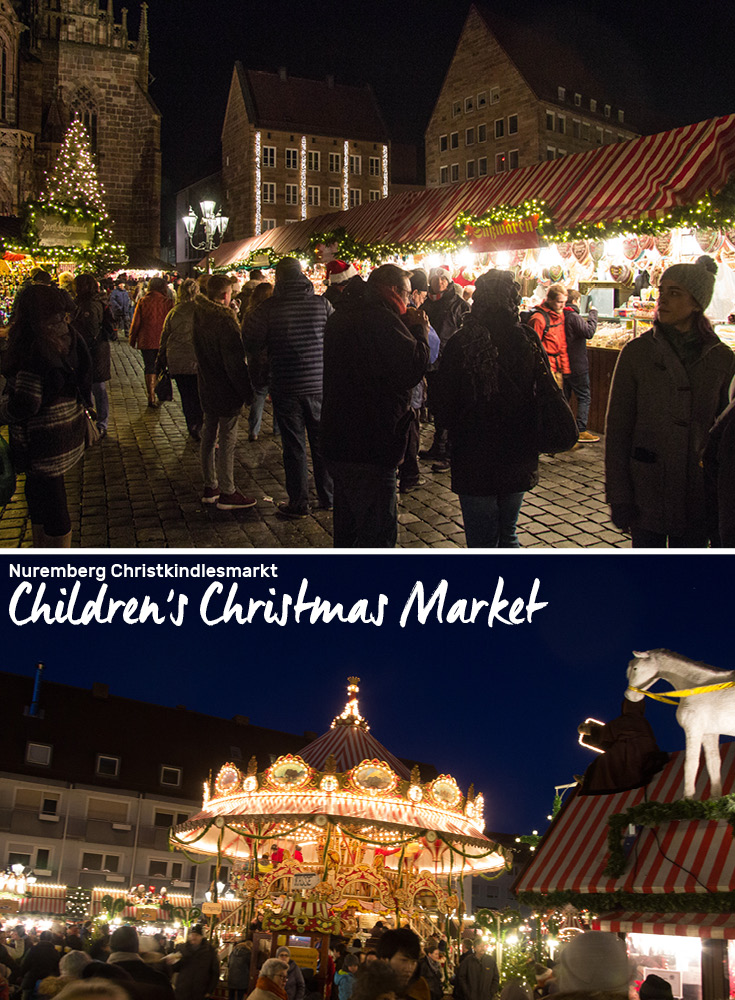
Star Attractions
Each Christmas market we visited offered exclusive events or experiences in order to distinguish themselves from other markets. Nuremberg has the Christkind legacy, a special childrens’ market, a global market, and strict standards on booth decorations in order to keep the market feeling traditional. Frankfurt am Main has coordinated ringing of the Church bells, a stunning decorated tree in front of the Römer, carolers singing from the rooftop of the church, and alternative smaller markets within the city’s market. Michelstädt’s and Hanau's star attraction is a larger than life Christmas pyramid while you stroll through the tiny cobblestone streets.
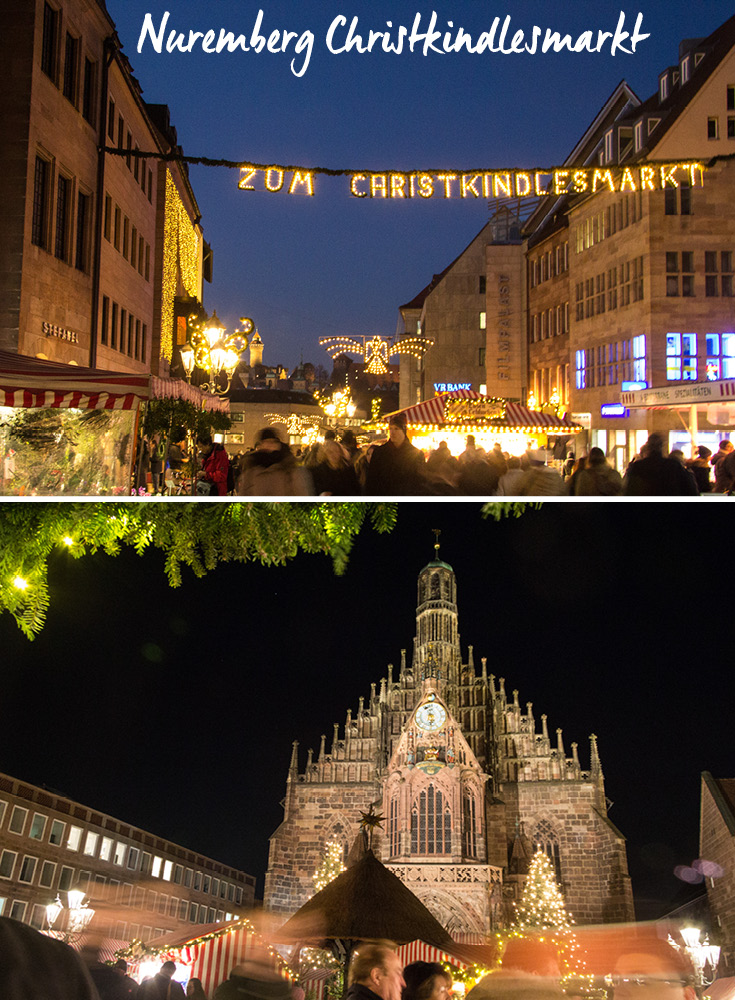
Craving Christmas Markets
I really fell in love with Germany's Christmas markets, and sorely miss them this year. I wonder why they haven't taken off in the United States? If you're looking for ways to bring German Christmas spirit home with you, read our earlier article here. Are you going to visit any German Christmas Markets this year? If you have any questions, we'd love to help! Leave a comment below or send us an email.
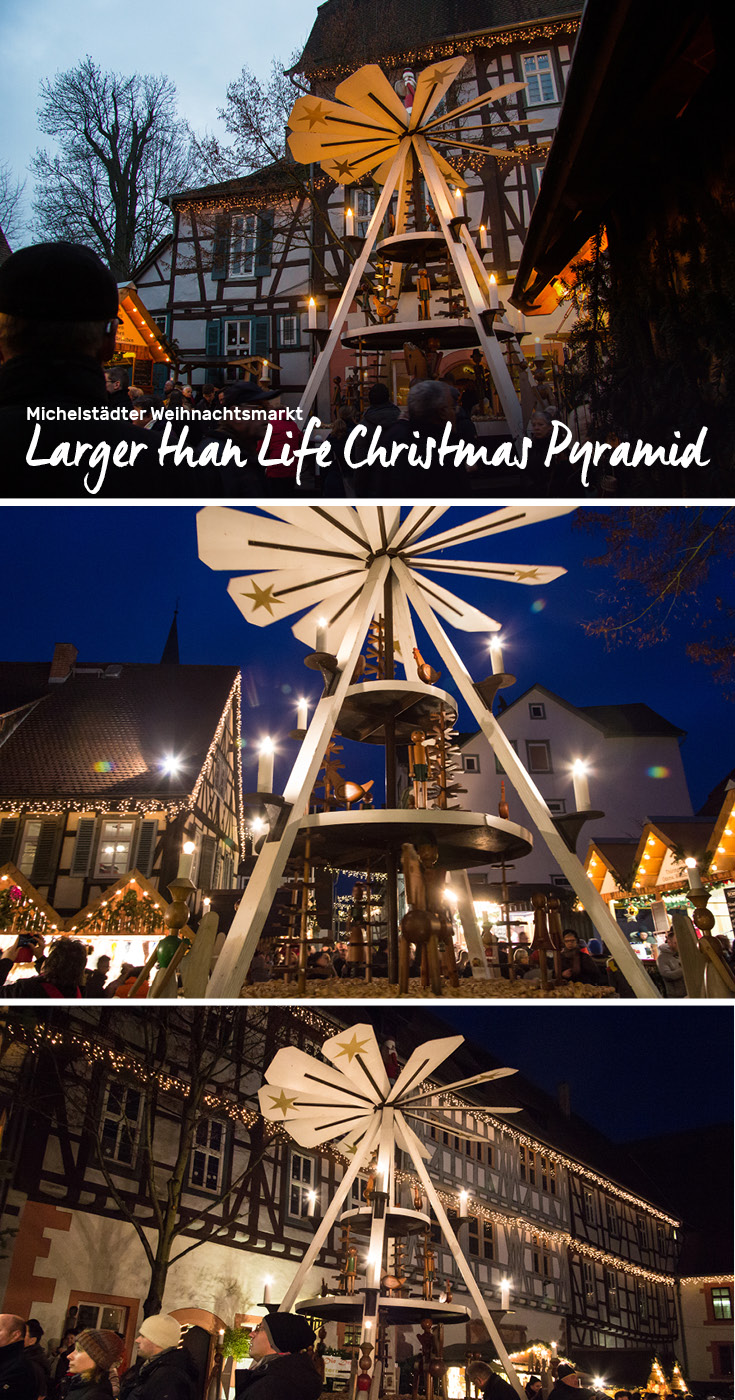
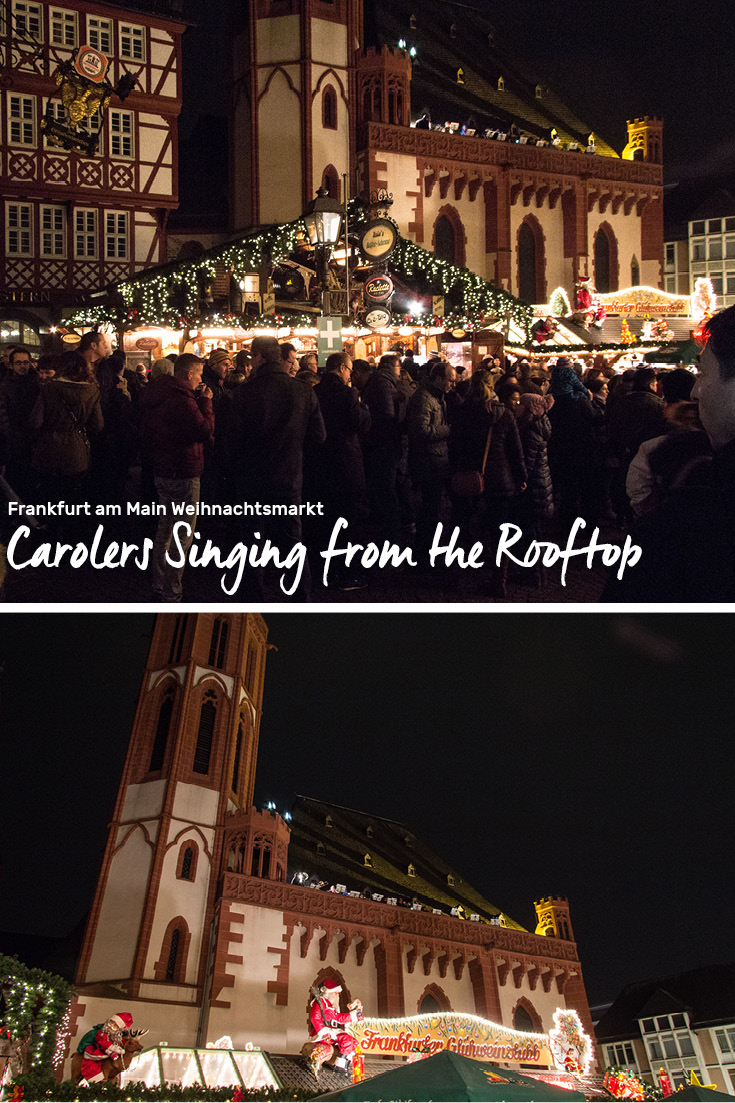
Follow Along
If you enjoyed this article, or these topics sound interesting to you, you'll love our weekly newsletter. You'll receive the newest posts each week and exclusive access to free planning resources like ‘Packing List & Tips for 2 Weeks in Germany’ and ‘Everything You Need to Rent a Car in Germany.
Thank you for reading!

